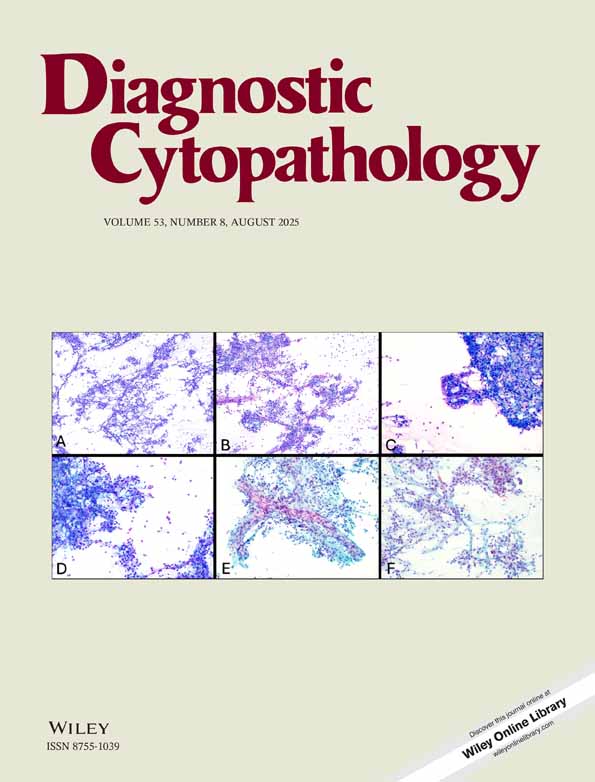Calcinosis cutis: Diagnosis by aspiration cytology—a case report
Abstract
Calcinosis cutis is characterized by the deposition of calcium salts in the subcutaneous tissues of the body. Metastatic calcifications can occur in the body in hyperparathyroidism and end-stage renal disease. Calcifications can also occur in a variety of other clinical settings and can be subjected to fine-needle aspiration (FNA). Calcinosis cutis was diagnosed by FNA in a 20-yr-old male who presented with a solitary subcutaneous nodule near the ankle, on the lateral malleolus. Smears showed amorphous granular material consistent with calcium, and occasional histiocytes. The presence of amorphous calcium salts along with histiocytes in the appropriate clinical setting is diagnostic of calcinosis cutis. The diagnosis was confirmed on histology. Diagn. Cytopathol. 1999;21:200–202. © 1999 Wiley-Liss, Inc.




